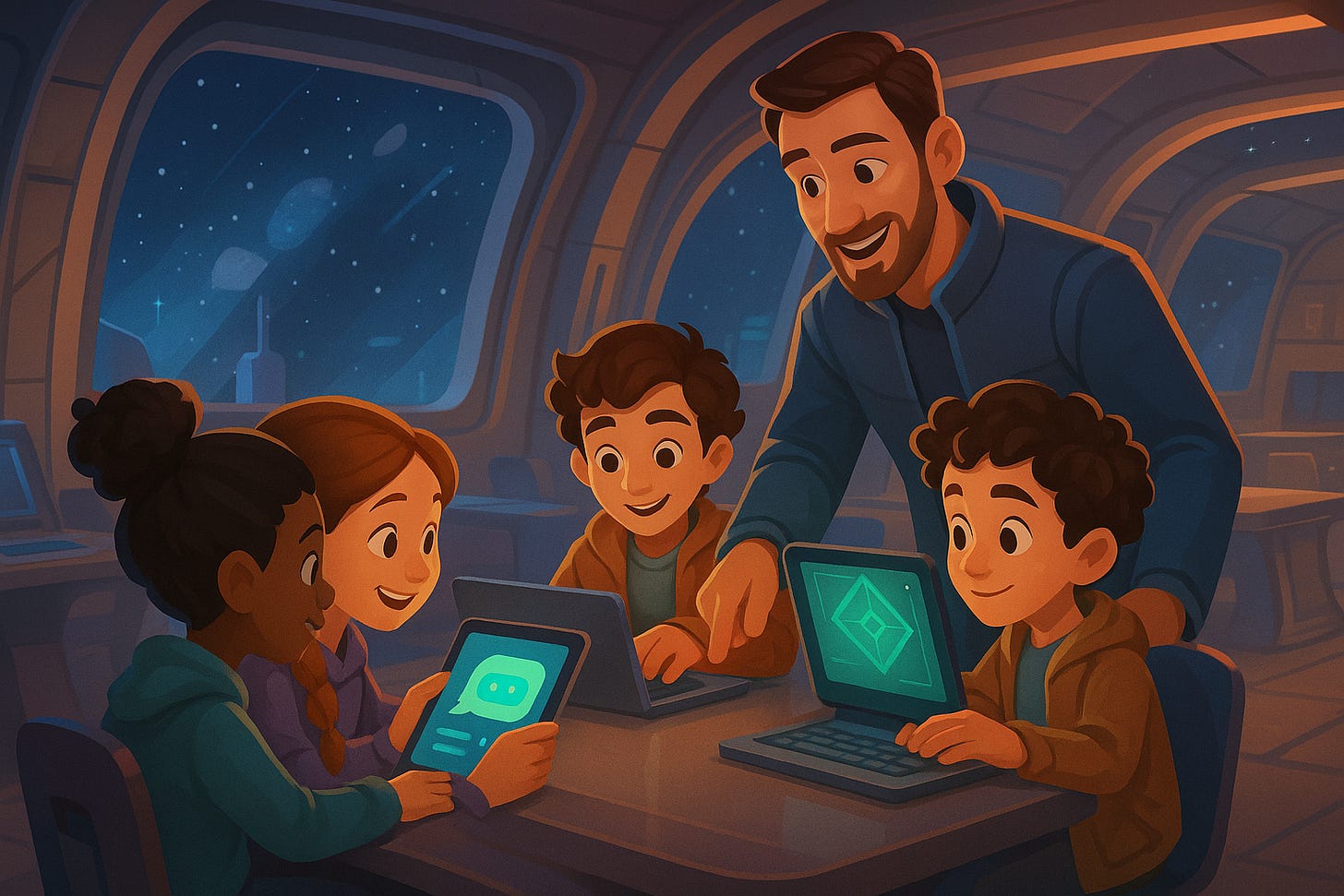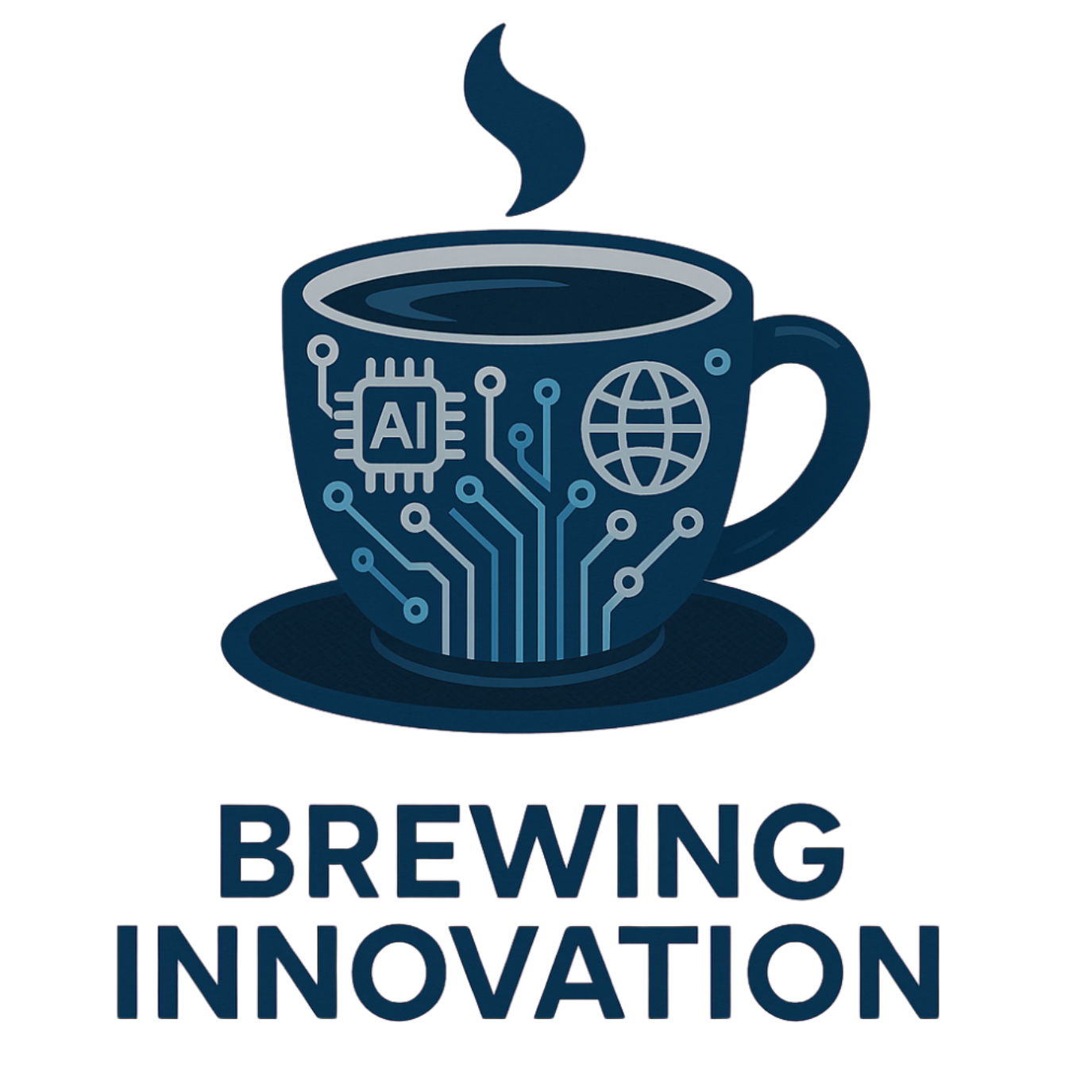Access for Students: Navigating AI Tools like Gemini and ChatGPT
Every student deserves access to AI, but access isn’t the goal. AI Literacy is.
In many districts, educators had a choice: block AI or embrace it.
When ChatGPT first made its way into public hands, the instinct was to restrict it and to protect learning. But quickly, it became clear that blocking wasn’t protection; it was avoidance.
Students were already using AI on their phones, in their homework, and (yes) sometimes on Snapchat. The question wasn’t if they’d use it, but how we’d guide them to use it well.
Many innovative educators made a different choice: they decided to teach access.
Why Access Matters
As a former special education teacher, I’ve seen how access changes everything.
When a student struggling with reading can use Gemini to summarize a passage or highlight key ideas, that’s not cheating, it’s scaffolding.
When a student with anxiety can rehearse a presentation using ChatGPT’s role-play feature before delivering it live, that’s not avoidance, it’s growth.
And when a high-performing student uses AI to test an argument or refine their writing, that’s not automation, it’s acceleration.
AI, when used responsibly, helps level the playing field. It gives every student, from those catching up to those racing ahead, a coach, a tutor, and a creative partner.
Understanding the Machine Behind the Magic
Before we can talk about access to AI, we need to talk about understanding it.
In his recent article, “How AI Tools Like Copilot & Gemini Actually Work — for Non-Techie Educators”, author and education leader Al Kingsley offers one of the clearest explanations I’ve seen of what’s really happening under the hood of tools like ChatGPT and Gemini.
Kingsley compares these systems to very advanced autocomplete engines. They don’t think, reason, or know in the human sense, they predict. They analyze patterns from billions of examples of text and use those patterns to generate likely next words, ideas, or explanations.
That might sound simple, but it’s foundational to AI literacy. When teachers and students understand that AI isn’t pulling from a single webpage or “knowing” an answer, it’s making a probability-based prediction their entire relationship with the tool changes.
They stop asking, “Can I trust it?” and start asking, “How do I guide it?”
Kingsley goes on to explain how educators can anchor AI’s power to school-specific knowledge through Retrieval-Augmented Generation (RAG), linking the model to trusted documents like curriculum maps or district policies so it produces grounded, reliable responses. He also offers practical guidance on avoiding bias, protecting data, and designing effective “prompt briefs” that mirror lesson planning.
In other words, Kingsley gives us the technical backbone for what AI literacy looks like in schools:
Demystify how AI works — prediction, not perception.
Model responsible skepticism — question outputs, check sources.
Anchor to trusted context — use school data, not random internet text.
It’s the perfect complement to access. Because if access is the doorway to learning with AI, understanding how it works is the key that unlocks it.
What Access Looks Like in Practice
Giving students access to AI doesn’t mean giving them free rein. It means designing learning environments with guardrails and intention.
Here’s what we’ve found works best in classrooms:
1. Structured Environments
Use school-managed accounts like Gemini for Education or ChatGPT Edu. These platforms meet privacy requirements, limit exposure to harmful content, and give educators visibility into student use.
2. Transparent Modeling
Teachers show how to use AI openly, not secretly. They think aloud:
“Let’s see what Gemini suggests. Now, how can we verify that?”
This normalizes curiosity and teaches digital skepticism, not dependency.
3. Reflective Routines
Students explain how they used AI. A short line like,
“I used ChatGPT to brainstorm ideas but wrote my own final version,”
turns a potential shortcut into a moment of metacognition.
The Guardrails Are Catching Up
Until recently, student AI access was a gray area. But 2025 has brought real progress:
ChatGPT Teen Experience: OpenAI launched a version for ages 13–17 with parental controls, safer content filters, and transparent data use.
Gemini for Education: Google’s student-facing Gemini runs in secure, district-managed environments under FERPA compliance.
Responsible AI Teaching Framework: Google’s new guide supports teachers in introducing AI ethics, bias, and digital literacy alongside skill development.
The message is clear: the era of “ban it and hope” is over. We’re entering the era of teach it and guide it.
Building Habits, Not Just Skills
AI literacy doesn’t happen through one PD day or a flashy app. It happens through habits.
James Clear’s Atomic Habits reminds us that small, consistent actions compound into transformation. The same principle applies here.
Every time a teacher says,
“Check what the AI got wrong,”
they’re building a micro-habit of critical thinking.
Every time a student documents how they used AI ethically, they’re building a micro-habit of accountability. And every time a classroom compares human and AI writing side-by-side, they’re building a micro-habit of discernment.
These daily, low-stakes routines build the muscle of AI literacy , not just for students, but for teachers, too.
Future-Proofing Students
Kevin Roose, in Future Proof, says that to thrive in the age of automation, we need to focus on what makes us most human: creativity, empathy, and originality.
That’s what true AI access is about. It’s not about mastering the tool; it’s about developing the judgment to know when not to use it.
One of Roose’s “rules for humans” is to be surprising, social, and scarce. That’s our job as educators, to help students do what AI can’t: to collaborate, empathize, and innovate in real contexts.
A New Definition of Access
When we talk about “access,” we’re not just talking about logins or devices.
We’re talking about equity.
We can’t allow AI fluency to become a privilege for only the tech-savvy or affluent. Access means giving every learner — in every zip code — the opportunity to understand, question, and shape AI’s role in their world.
The real question isn’t if students should use AI.
It’s who gets to learn how to use it well.
Leadership in the Age of AI
For administrators, this isn’t about chasing shiny tools. It’s about building systems that protect teachers’ time, promote innovation, and model responsible experimentation.
Here’s what we’ve learned works:
Anchor AI in your district’s instructional priorities, not your tech plan.
Build pilot teams of teachers to test and iterate on real workflows.
Model AI use yourself, in emails, agendas, feedback loops, and reflection.
Create safe spaces for curiosity and failure.
When leaders model learning with AI, it gives everyone else permission to explore.
Access Without Abdication
Access doesn’t mean letting AI take over. It means teaching students how to think alongside it.
When I see a student use Gemini to plan an essay outline — and then improve it with their own insights — that’s not automation.
That’s amplification.
When I watch a teacher use Gemini to reword an IEP goal for clarity and save 10 minutes that’s not replacement. That’s restoration.
AI, used with intention, gives teachers back time and gives students back ownership.
Try This Week: Building AI Habits in Your Classroom
Here are a few small, doable routines to build AI literacy in your school:
✅ AI Audit: Ask students to evaluate an AI-generated summary for accuracy or bias.
✅ Prompt Reflection: After using an AI tool, have students write one sentence about how they used it and what they changed.
✅ Compare & Contrast: Use Gemini or ChatGPT to analyze a topic, then have students research a human source and compare findings.
✅ Teach the “Why”: Ask, “Why would you trust (or not trust) this output?”
One conversation, one reflection, one habit at a time, that’s how we build a culture of responsible AI use.
The Horizon Ahead
We’re still writing the rules. But one thing is clear: AI access is no longer an experiment: it’s a literacy.
If we get it right, AI won’t make learning easier. It will make it more human.
Our job now isn’t to predict the future.
It’s to help students shape it — with integrity, creativity, and courage.
Further Reading
How AI Tools Like Copilot & Gemini Actually Work — Al Kingsley (LinkedIn)
Future Proof by Kevin Roose
Atomic Habits by James Clear
Stay Curious. Stay Caffinated ☕




